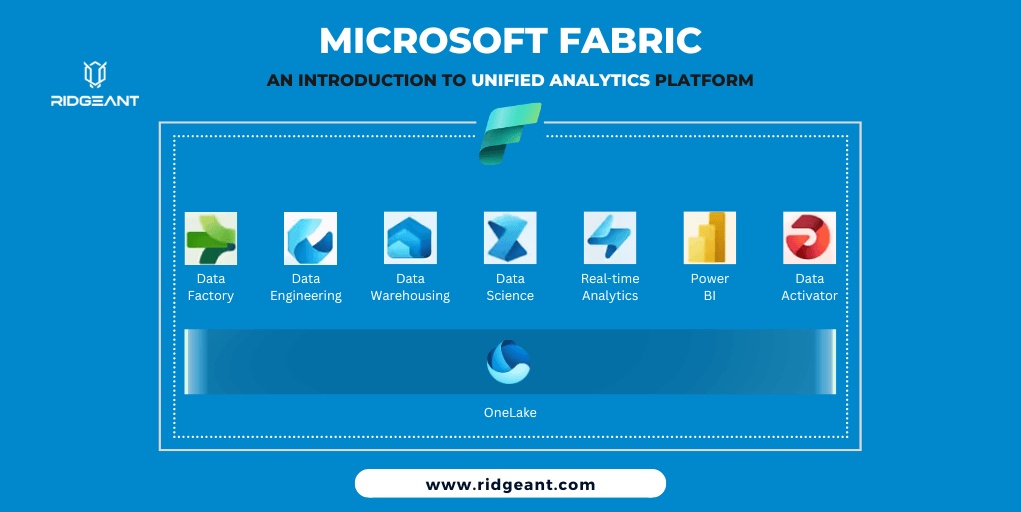We are immersed in data.
The applications we use, the things we browse, the conversations we have, the products we buy, and the devices we use – these all have only one thing in common, data. It is ubiquitous.
With the advancement of AI, data has become more important for organizations across every industry worldwide. Majority of the companies have taken a step in the direction to become data-driven organizations. But most organizations are miserably failing at embracing a data-driven culture.
One of the key challenges they face is the diverse and fragmented landscape of data and AI technologies available in the market. Various tools, frameworks, and platforms exist, each with its own set of advantages and limitations. This heterogeneity often leads to complexity and inefficiency, preventing organizations from leveraging the full potential of their data.
In this blog post, we are addressing this challenge through a one-of-its-kind data platform from Microsoft.
Yes, we are talking about Microsoft Fabric, a lake-first, unified, and open analytics foundation.
Let’s explore this in detail.
What Is Microsoft Fabric?
Built on the foundation of Microsoft’s extensive experience and expertise in data and AI, Fabric aims to streamline the entire data ecosystem. It provides a comprehensive set of tools, services, and frameworks that enable organizations to effectively manage, process, and derive insights from their data.
On May 23rd, Microsoft unveiled Microsoft Fabric, a unified analytics platform that integrates technologies like Azure Data Factory, Azure Synapse Analytics, and Power BI into a single platform.
What Makes It Unique From Other Available Platforms?
Microsoft Fabric combines the power of BI and AI by integrating powerful technologies like Azure, Synapse, and Power BI into one platform.
It is an umbrella concept that covers significant aspects of data engineering, data warehousing, data science, analytics, and reporting.
One of the key advantages of Microsoft Fabric is its ability to bring together disparate data sources and technologies into a cohesive and integrated platform. By providing a unified environment, Fabric eliminates the need for organizations to navigate the complexities of multiple systems and technologies. This unified approach simplifies the data management process, reduces overhead costs, and improves overall efficiency.
Microsoft Fabric: Shift From Only BI to BI + AI
Microsoft Fabric empowers organizations to leverage the power of AI and advanced analytics at scale. It offers a wide range of AI services, such as machine learning, natural language processing, and computer vision, which can be seamlessly integrated into existing applications and workflows. This integration enables organizations to unlock the hidden insights within their data, make data-driven decisions, and drive innovation.
By using Copilot in Microsoft Fabric, users can use conversational language to create dataflows and pipelines, build machine learning models, and generate codes. Azure OpenAI service in Microsoft Fabric helps customers leverage generative AI to find insights from data.
Let’s discuss the major components of Microsoft Fabric in detail.
Key Components of Microsoft Fabric: How It Is Different?
Microsoft Fabric is not for any one role such as data engineer, data analyst, data warehousing professional, or data scientist. It is for everyone.
From data collection to analysis to AI, data goes through multiple analyses and stages. Fabric is one such platform that enables a unified experience and architecture with all the necessary capabilities to convert raw data into AI-powered insights.
Fabric offers seven core workloads that cater to different data-related tasks:
Data Factory: It allows you to connect to various data sources, both on the cloud and on-premises. You can easily transform data using a drag-and-drop interface and orchestrate data pipelines.
Synapse Data Engineering: This workload simplifies Spark development with user-friendly authoring tools. It offers an instant start with live pools and facilitates collaboration among team members.
Synapse Data Science: Designed for data scientists, this workload provides a complete workflow for building advanced AI models. It enables easy collaboration, training, deployment, and management of machine learning models.
Synapse Data Warehousing: This workload offers a unified experience for data warehousing and a converged lake house with high-performance SQL queries on open data formats.
Synapse Real-Time Analytics: Developers can leverage this workload to process and analyze streaming data from IoT devices, telemetry, logs, and more. It ensures high performance and low latency for handling massive volumes of data.
Power BI in Fabric: It provides powerful visualization and AI-driven analytics, enabling business analysts and users to extract valuable insights from data. It is also integrated with Microsoft 365, offering intelligent insights to users.
Data Activator: This workload offers real-time detection and monitoring of data, capable of triggering notifications and actions based on specified patterns. It provides a no-code experience for easy implementation.
Some of the abovementioned workloads are in preview and will be made available gradually. Microsoft Fabric will be a game-changer platform for every business user as it empowers them to save significant costs, time, and effort.
Fabric comes with a SaaS (Software-as-a-Service) which is a multi-cloud data lake known as OneLake. It is like OneDrive. All Fabric workloads automatically become a part of OneLake, similar to all Microsoft 365 apps wired into OneDrive.
OneLake acts as a unified storage system for all business users and developers, eliminating the chaotic data silos and providing all users with faster and smooth collaboration. It also ensures privacy and security are implemented centrally.
Microsoft Fabric: Unlock Innovation And Insights
Microsoft Fabric is currently in preview mode. If you are a Power BI user, Fabric will be made available after July 1, 2023. Try out Fabric’s features and functionalities to see how it can redefine your ways to access, manage, and act on data.
This AI-powered platform holds immense potential to help businesses unlock insights efficiently and quickly in the era of AI.
Have you signed up for the free trial yet?
Note: This Post Was First Published On https://ridgeant.com/blogs/microsoft-fabric/


No comments yet